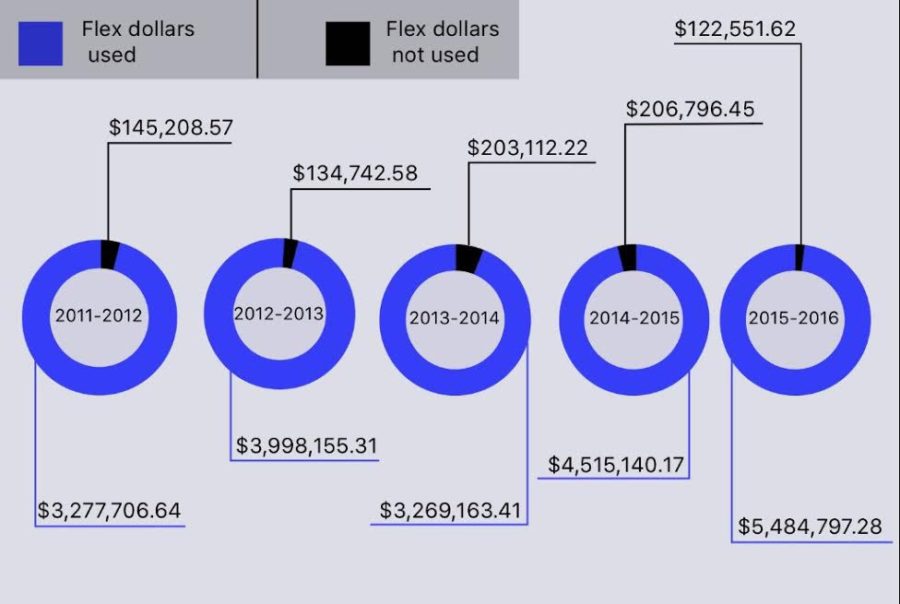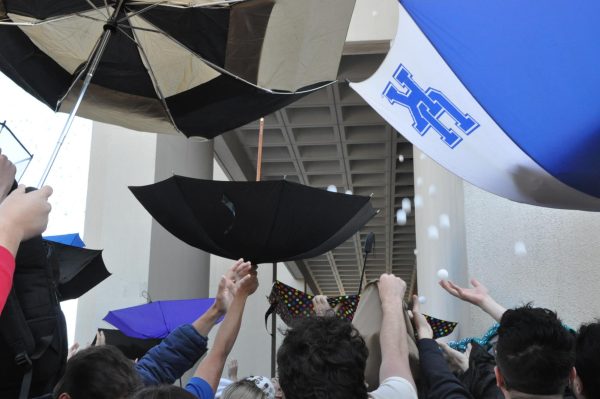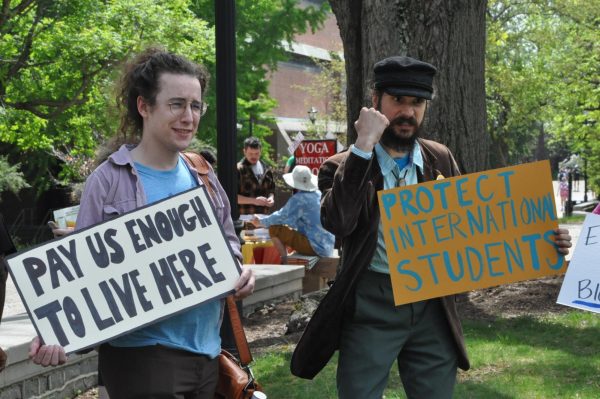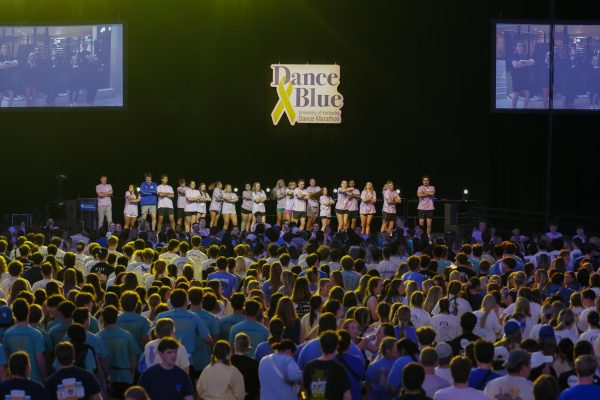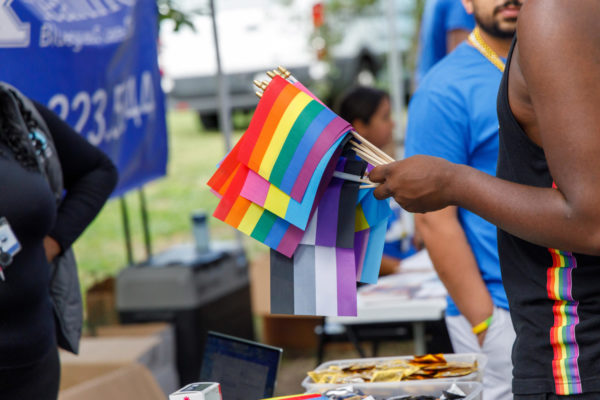Flex dollar spending up last school year
Over the past five years, an average of about $162,482.29 flex dollars are not spent, according to data from UK Dining.
August 2, 2016
At the end of each semester, some UK students have large amounts of flex dollars left on their meal plans.
For the last school year, UK Dining reported that $122,551.62 flex dollars were left over. The amount sounds astounding, but it was actually the lowest in the past five years.
The highest amount unused was $206,796.45 flex dollars, and was left over from the 2014-15 school year. UK Dining officially partnered with Aramark in July 2014 just before that school year, but the surplus had only increased $3,684.23.
The biggest increase in flex dollars not used, or $68,369.64, was from the 2012-13 school year to the 2013-14 school year.
Over the past five years, an average of about $162,482.29 flex dollars are not spent, according to data from UK Dining. UK Dining Marketing spokeswoman Nicole Marcum wrote in an email to the Kentucky Kernel that Aramark created more dining options to campus.
For the 2015-16 school year, the most flex dollars were spent, $5,484,797.28. Flex dollars spending also increased after Aramark partnered with UK Dining.
| Year | Unused flex dollars | Used flex dollars |
| 2011-12 | $145,208.57 | $3,277,706.64 |
| 2012-13 | $134,742.58 | $3,998,155.31 |
| 2013-14 | $203,112.22 | $3,269,163.41 |
| 2014-15 | $206,796.45 | $4,515,140.17 |
| 2015-16 | $122,551.62 | $5,484,797.28 |
Flex dollars roll-over from the fall semester to the spring semester. At the end of the spring semester, flex dollars that are not spent expire.
“Unused flex dollars are reinvested back into the program to enhance the dining program with new concepts, brands and events,” UK Dining Director of Marketing Charity Bradley wrote in an email to the Kernel.
Marcum wrote in an email to the Kernel there could be several reason why students have unused flex dollars.
“Each student is different in how they prefer to eat,” Marcum wrote. “Some are three-meals a day and others prefer multiple smaller meals. UK Dining offers students choices.” Marcum noted one example of a choice is Wildcat Deals at retail locations, such as Starbucks, Intermezzo and Ovid’s, during certain hours.
Flex dollars are typically spent at retail food locations and meal swipes are used at dining halls like The 90 and Blazer Cafe.
Marcum wrote that Aramark opened the Dining Center to help students get the most out of their meal plans. Housed in The 90, the Dining Center monitors students’ usage of their meal plans and if students have an excessive amount of either meal swipes or flex dollars, the center notifies student by email, Marcum wrote. She said the center also provides guidance to best use meal plans, meal plan counseling and nutritional advice.
Marcum also wrote that with Alpha Phi Omega, UK Dining organizes “Flex for a Cause.” At the end of each semester, donation bins are placed in Wildcat Pantries and students can buy nonperishable items to donate.
UK Dining also sets up stations during freshmen orientations to discuss meal plans with incoming students, Marcum wrote. The marketing team helps students determine if they are on the right plan.
Currently, UK Dining offers eight meal plans for students and three faculty options. Marcum wrote UK Dining reviews meal plan options each year.
“We want students to have the option to choose meal plans based on their individual needs,” she said.












































































































































